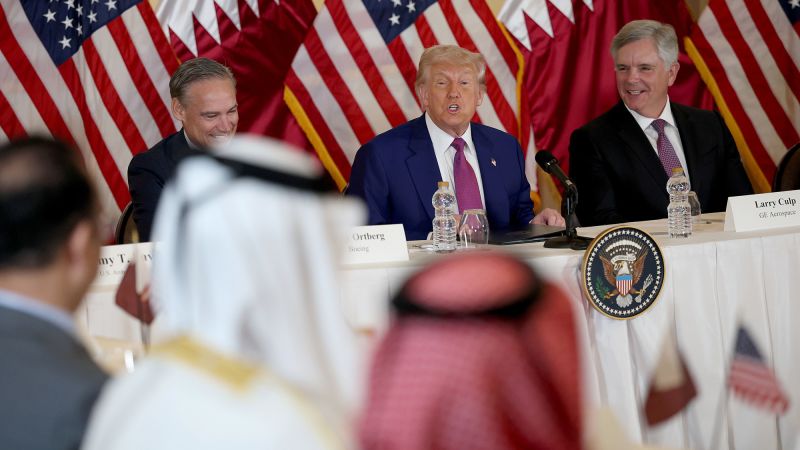In recent statements, President Donald Trump highlighted a potential shift in trade relations between the United States and India, suggesting that India has offered to eliminate tariffs on US goods as part of ongoing negotiations. However, India swiftly countered this claim with its own comments, indicating that discussions were still in progress and that any conclusions drawn would be premature. This exchange underscores the complexities surrounding contemporary international trade agreements.
During a roundtable discussion with business leaders in Doha, Qatar, President Trump emphasized the challenges that US companies face when trying to penetrate the Indian market due to exorbitant tariffs, which he labels among the highest globally. He remarked, “India is one of the highest tariff nations in the world. It’s very hard to sell into India.” Trump continued by asserting that India had made an offer that included eliminating these tariffs entirely, making a bold claim about the potential for a trade agreement that could radically reshape economic exchanges between the two nations.
Responding to Trump’s assertions, India’s Foreign Minister, S. Jaishankar, provided clarity by explaining the ongoing nature of the negotiations between New Delhi and Washington. He characterized these talks as “complicated” and “intricate,” cautioning that nothing is finalized, and the ultimate results will hinge on mutual agreement. Jaishankar articulated that any trade deal needs to be mutually beneficial for both parties involved, reaffirming that it must work for both the United States and India.
The US has long criticized India’s high tariff policies, which can be as steep as 70% on automobiles, 20% on some networking equipment, and 80% on rice imports. These tariffs, coupled with non-tariff barriers such as regulatory challenges for importers, significantly stifle trade. In light of this, the prospect of a zero tariff, if indeed offered by India, would be a substantial victory for US businesses aiming to export to the world’s most populous nation. Businesses have long awaited clarity and ease in trading relationships, as tariffs hinder the potential for robust economic exchange.
Trump further elaborated on the initial discussions in Doha, expecting that the removal of tariffs could signal a significant turning point in US-India trade relations. He highlighted the excessive tariffs stating that the high cost limits business interactions and trade opportunities between the nations. Jaishankar reiterated the importance of constructing an agreement that is fair, lacking which, he argued, it would be premature to evaluate the negotiations’ effectiveness.
As of 2024, data shows that the US stands as India’s largest trading partner, yet interestingly, India ranks tenth among US trading partners. Alarmingly, the trade deficit with India has been escalating, with the US importing $45.7 billion more than it exports to India in 2024 alone, raising concerns about a growing disparity in trade relations.
In the broader context of international trade, India is not the only nation exploring ways to negotiate advantageous deals with the US, especially after Trump’s extensive tariffs reshaped global trading patterns. Trump’s administration has put in place a base tariff of 10% on all goods entering the US and threatened further reciprocal tariffs on nations, including India, which faces a 26% tariff on its exports to the US.
Over the past week, the Trump administration has celebrated notable achievements in trade, including establishing a framework for negotiations with the UK aimed at lowering tariffs, and facilitating a groundbreaking temporary rollback of tariffs between the US and China. Such developments suggest that the current administration is actively engaged in reworking global trade dynamics.
Trump has also made several remarks throughout his presidency regarding India’s heavy tariffs and overall trade practices, framing them as barriers that need addressing. In strategic discussions with Indian Prime Minister Narendra Modi, Trump reminded him of the need for more equitable trade.
Data from the White House indicates that lifting trade barriers between the two nations could potentially boost US exports to India by at least $5.3 billion annually; however, how these figures were determined remains unclear. Despite the ongoing negotiations, the US trade deficit with India has doubled since Trump’s administration began, indicating both countries have significantly increased their trade with one another.
Among the top imports from India are pharmaceuticals, smartphones, and apparel, whereas the main American exports to India include various oils, gases, chemicals, and aerospace components. This intricate web of trade relationships continues to develop as negotiations evolve between the two nations, impacting global economic landscapes.



